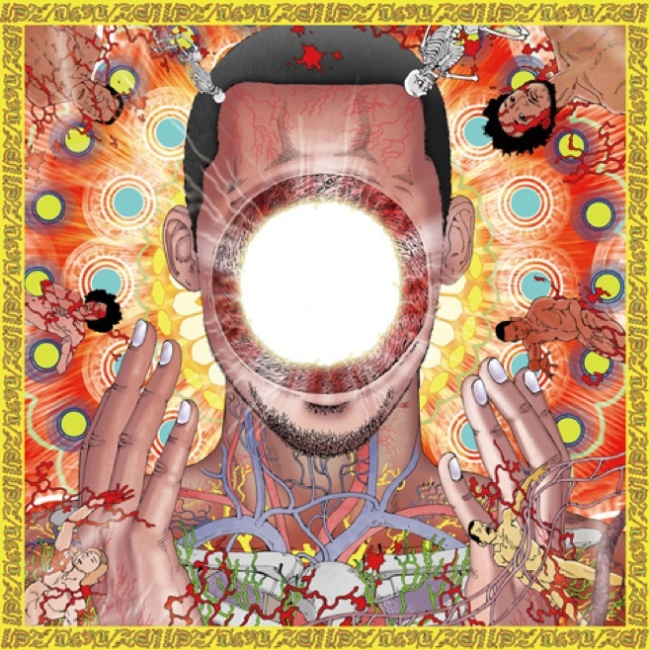
Robin Gibb
“50 St. Catherine’s Drive”
(Rhino/Warner)
As one third of the Bee Gees, Robin Gibb had a plaintive ache in his trembling, vibrato-filled voice that helped make such Brothers Gibb hits as “Holiday’’ and “I Started a Joke” so memorably distinctive. On “50 St. Catherine’s Drive,” his solo posthumous 17-track set, Gibbs’ searing vocal vulnerability is made all the more poignant given that it is his final album.
Named after the address of the house in which Gibb was born in 1949 on the Isle of Man, the intensely personal album was written between 2006 and 2008. The exception is “Sydney,” a nostalgic song about Gibb and his famous siblings, written in August 2011. Gibb, already ill, hoped to finish the song with his brother Barry, but died nine months later from cancer before they had the opportunity.
Gibb, who wrote or cowrote every song here, was affected deeply by the 2003 loss of his twin, Maurice, and much of the album’s mainly mid-tempo material deals with loyalty and love that death doesn’t diminish. But as surely as there is an embrace of everlasting eternity, there’s also a very real awareness that our time here on earth is limited. He movingly sings on “Days of Wine & Roses,” the bittersweet album opener: “Time and tide will wait for no one. Now you’re gone.”
“50 St. Catherine’s Drive” makes no apologies for its unabashed sentimentality. The album could have been a maudlin mess, but, in Gibb’s skilled hands, instead it’s a delicate reminder from one who is no longer here to cherish each day. (AP)

Flying Lotus moves deeper into the unknown
Flying Lotus
“You’re Dead!”
(Warp)
The fifth album by Los Angeles producer Flying Lotus moves even further away from his early instrumental hip-hop work toward a more fully immersed form of “fusion.” Don’t be misled by the title. “You’re Dead!” is a celebration of what comes next.
The song cycle plays like an expedition through alternate realms and dimensions. Vistas of brassy bliss are tag-team with spastic fits of free jazz. Herbie Hancock shows up on the Fender Rhodes. Extroverted bass lines bounce off restless pattering drums. Snoop Lion inimitably drops “Nickle-plated 9/Bang! Bang!/ Blow your mind.”
Opener “Theme” lays out this metaphysical plan until Kendrick Lamar takes it back to the future, spitting about having an out-of-body experience before singing repeatedly, “You never gonna catch me.” It happens to be the catchiest minute of the album.
The music feels constantly in transit. Tempos and textures play possum. Take the slow-mo waddle of “Turtles” that sounds like it was recorded in a bird sanctuary. Or “Ready Err Not,” a master class in warped beatsmithery. The processional “Coronus, The Terminator” is carried by a litany of torch-lit voices.
Even within songs it’s about the journey. The shadowy noir of “Obligatory Cadence” moves from heart-rending strings to classic boom-bap. Closer “The Protest” opens with epic aspirations before returning to the sort of stutter-step beat that would have been right at home on FlyLo’s “1983” debut.
“You’re Dead!” is a deep, spiritual listen, the work of an auteur intent on not only nodding heads but also bending minds. (AP)

Taylor Swift’s ‘1989’ a mature reflection
Taylor Swift
“1989”
(Big Machine Records)
Taylor Swift’s all-out move into pop music on her fifth album, “1989,” is the sound of a young artist who has gradually evolved from a teenager obsessed with boys and journal writing into a young woman embracing life in New York and stepping to a new beat.
“Shake It Off,” her first single, was a fun introduction to the new Swift sound. But it’s the most lighthearted track on “1989,” which sweeps from the rocking confrontation of “Bad Blood” to the delicate “This Love” to the Lana Del Ray retro-noir of “Wildest Dreams.”
Taylor still flirts playfully at times, as on “How You Get the Girl,” but more often she comes off as more guarded, more apprehensive and more realistic in her views on relationships.
Heavy on bass, drum loops and electronic sounds and using harmonic vocals as a form of rhythm, Swift mixes beats and melody in search of a classic pop model of her own. She ignores modern pop’s reliance on guest stars to explore the many ways she can use her own voice. At times she clips her words sharply against the beats, while still occasionally speaking words to establish intimacy. But she also opens and sings like she rarely has.
A couple of songs come off as generic exercises, especially the arrangement of “I Know Places.” Still, “1989” is another triumph for Swift -- not a precocious achievement, as in her early years, but a mature reflection of where she is now, in her life and in her artistry. (AP)
-
Articles by Korea Herald




![[Herald Interview] 'Amid aging population, Korea to invite more young professionals from overseas'](http://res.heraldm.com/phpwas/restmb_idxmake.php?idx=644&simg=/content/image/2024/04/24/20240424050844_0.jpg&u=20240424200058)












![[KH Explains] Korean shipbuilding stocks rally: Real growth or bubble?](http://res.heraldm.com/phpwas/restmb_idxmake.php?idx=652&simg=/content/image/2024/04/25/20240425050656_0.jpg&u=)

